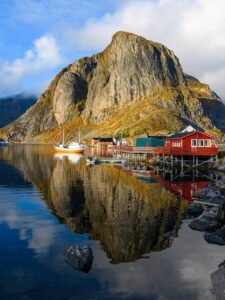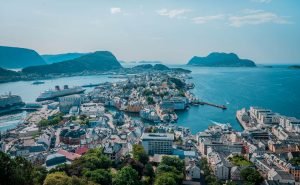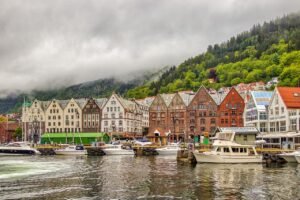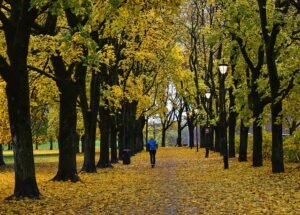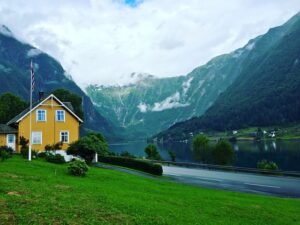
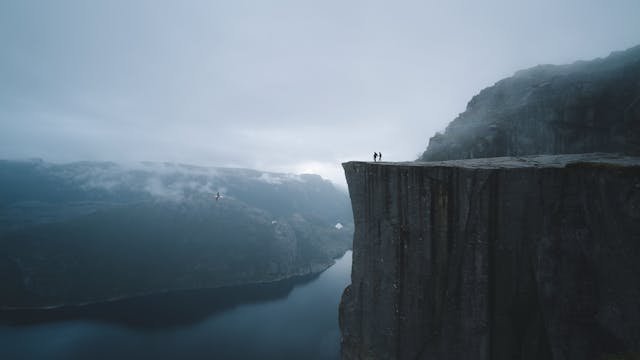
Exploring Norway’s National Parks: Hiking, Wildlife, and Natural Wonders
Have you ever wondered where you might find Europe’s largest herds of wild reindeer or hike amidst some of the highest peaks in Scandinavia? Norway’s national parks promise these experiences and more, offering expansive landscapes teeming with vibrant wildlife and breathtaking natural wonders.
With over 85 percent of the national parks nestled in mountainous regions and four marine parks along the coastline, Norway presents an unparalleled opportunity to immerse yourself in nature. Known for adhering to the “Leave No Trace” principle, these parks advocate minimal environmental impact, promoting the conservation of their pristine landscapes for generations to come.
If you’re planning to explore Norway’s national parks, be sure to visit Norway’s official website for in-depth guidelines on how to navigate these remarkable natural sanctuaries.
Table of Contents
ToggleAn Overview of Norway’s National Parks
Norway’s national parks serve as majestic guardians of Scandinavian wilderness, preserving the natural wonders of Norway. Each of the 47 parks offers unique charm and breathtaking landscapes that invite visitors to explore a world of Norway outdoor adventures. These parks feature diverse ecosystems ranging from towering mountain peaks and sweeping plateaus to lush valleys and pristine marine environments.
History and Significance
The Norwegian parks history is rooted in a deep commitment to conservation and environmental stewardship. Established to protect the country’s vast natural heritage, the parks ensure the survival of diverse wildlife and landscapes. Notable parks include Dovrefjell-Sunndalsfjella National Park, one of the only places globally to observe musk oxen, and Rondane National Park, home to ten peaks over 2,000 meters and one of the last wild reindeer populations in Europe. Jotunheimen National Park showcases Norway’s highest peaks, Galdhøpiggen and Glittertind, offering remarkable hiking opportunities.
Geographical Distribution
Spread throughout the country, Norway’s national parks dot the landscape, making these natural havens accessible to both locals and visitors. From the southern coast’s Raet National Park with its varied habitats to the untouched wilderness of Lomsdal-Visten National Park in Nordland county, each park represents a unique slice of Norway’s topographical diversity. Hardangervidda National Park boasts Europe’s largest mountain plateau, while Jostedalsbreen National Park is home to the largest glacier in continental Europe. For those seeking solitude, Borgefjell National Park offers a truly remote wilderness experience.
| National Park | Features | Region |
|---|---|---|
| Jotunheimen | Highest peaks: Galdhøpiggen, Glittertind | Oppland & Sogn og Fjordane |
| Hardangervidda | Europe’s largest mountain plateau | Hordaland, Buskerud, and Telemark |
| Breheimen | Glaciers, steep mountains, lush valleys | Oppland & Sogn og Fjordane |
| Dovrefjell-Sunndalsfjella | Habitat for musk oxen | Oppland, Hedmark, Midt-Norge |
| Rondane | Peaks over 2,000 meters, wild reindeer | Oppland & Hedmark |
| Jostedalsbreen | Largest glacier in continental Europe | Sogn og Fjordane |
| Raet | Sandy beaches to rocky shores | Southern Norway |
| Lomsdal-Visten | Untouched wilderness | Nordland |
| Lofotodden | Steep mountains, sea views | Lofoten |
| Borgefjell | Remote wilderness | Midt-Norge |
| Sjunkhatten | Family-friendly landscapes | Nordre Nordland |
| Folgefonna | Glaciers | Vestland |
Through decades of environmental consciousness, Norwegian parks history has paved the way for remarkable Norway outdoor adventures amidst the natural wonders of Norway. These parks not only remind us of the pristine beauty of Scandinavia but also of our duty to protect and savor these natural landscapes for generations to come.
Norway’s Right to Roam
One of the most cherished traditions in Norway is the principle of allemannsretten, legally recognized through the Norwegian Outdoor Recreation Act of 1957. This concept grants everyone the freedom to explore uncultivated lands, forests, and water bodies, provided they act responsibly, thus practicing Norway’s Right to Roam.
The Norwegian Outdoor Recreation Act
Under the Norwegian Outdoor Recreation Act, allemannsretten provides extensive freedom, encouraging locals and tourists alike to engage in activities such as hiking, skiing, cycling, and camping. This invaluable right allows exploration of natural Norwegian landscapes while fostering a deep connection with nature. However, this freedom comes with a need for responsible behavior to preserve the integrity of these environments.
Essential Guidelines for Visitors
While exploring Norwegian nature, it is crucial to follow some essential guidelines. Campers are generally encouraged to move on after spending one or two nights in a single spot to minimize their environmental footprint. Maintaining a minimum distance of 150 meters from private homes or fenced-off areas ensures respect for private properties.
Adhering to local regulations, especially in popular tourist regions such as Lofoten and Fjord Norway, is essential. These areas may have specific restrictions on free camping during the summer, necessitating stays at designated campsites. Additionally, note that campfires in nature are prohibited from April 15th to September 15th to mitigate fire hazards. It is also important to practice responsible camping by leaving no trace behind, thus protecting the environment and wildlife.
Embracing “allemannsretten” not only allows for freedom in exploring the natural landscape but also entails becoming a steward of the environment, promoting sustainability and responsible travel. This stewardship includes guidelines like disinfecting fishing equipment between uses in different water bodies to prevent the spread of fish diseases.
Exploring Norwegian nature under the umbrella of the Norwegian Outdoor Recreation Act can be incredibly rewarding. By embracing and respecting these practices, you contribute to preserving the pristine beauty and ecological balance of Norway’s landscapes for future generations.
Best Time to Visit Norway’s National Parks
When planning a trip to experience the best hikes in Norway and the natural beauty of Norwegian parks, timing is crucial. Norway’s varied seasons each offer unique opportunities for exploring its national parks, from breathtaking fjords to majestic mountains.
Seasonal Highlights and Weather
Summer (June to August): This is the peak season for visiting Norway parks, with extended daylight hours perfect for sightseeing and outdoor activities. The weather is mild, making it the ideal time for the best hikes in Norway.
Fall (September to November): A visit during fall allows you to witness the mesmerizing Northern Lights in regions like Tromsø and the Lofoten Islands. The cooler temperatures and shorter days provide a serene backdrop for nature lovers.
Winter (December to March): This season transforms Norway into a winter wonderland. Activities such as skiing, dog sledding, and snowmobiling are popular. Visiting Norway parks during winter offers a magical, snowy experience.
Spring (April to May): Spring brings blooming wildflowers, lush greenery, and rushing waterfalls. It’s a beautiful time for outdoor adventures and exploring Norway’s scenic landscapes.
Avoiding Crowds and Finding Solitude
While the high season from May to September showcases the full splendor of Norway’s parks, June and July often see larger crowds. For those seeking tranquility, visiting Norway parks during the shoulder seasons – spring and fall – can provide a more solitary and peaceful experience.
| Season | Highlights | Best Activities |
|---|---|---|
| Summer (June to August) | Extended daylight, mild weather | Sightseeing, hiking, outdoor activities |
| Fall (September to November) | Northern Lights, cooler temperatures | Northern Lights viewing, tranquil nature walks |
| Winter (December to March) | Snowy landscapes, winter sports | Skiing, dog sledding, snowmobiling |
| Spring (April to May) | Blooming flowers, rushing waterfalls | Hiking, nature exploration |
Deciding when to visit Norway ultimately depends on what experiences and activities you prioritize, whether it be the best hikes in Norway, witnessing the Northern Lights, or enjoying a scenic spring adventure.
Top Hiking Trails in Norway’s National Parks
Norway’s national parks offer some of the most breathtaking hiking experiences in the world. With their diverse landscapes and well-marked paths, these parks cater to hikers of all skill levels. From the dramatic fjords of Geirangerfjord to the rugged terrains of Trollheimen and the stunning vistas on Lofoten Island, there is no shortage of scenic adventures awaiting enthusiasts. Let’s delve into three of the top hiking destinations in Norway.
Geirangerfjord: Hiking Paradise
Geirangerfjord is often referred to as a hiker’s paradise, thanks to its exceptional trails that weave through one of Norway’s most iconic fjords. The Geirangerfjord trails offer a range of experiences, from leisurely strolls to more challenging hikes.
- Distance: 2-3 miles
- Elevation Gain/Loss: 550′
- Cruise Duration: 1.5 hours
Hiking along these trails allows adventurers to marvel at cascading waterfalls, lush greenery, and panoramic fjord views. The varied elevation gains and losses make it an exciting trek for both novice and seasoned hikers.
Trollheimen: Scenic Adventures
Trollheimen stands as one of Norway’s most picturesque hiking destinations, offering challenging yet rewarding Trollheimen hikes. This area, known for its rugged beauty, provides an authentic trekking experience through diverse landscapes.
Trollheimen encompasses a blend of tranquil valleys and dramatic peaks. Many routes here are suited for advanced hikers looking to challenge themselves while soaking in the striking natural beauty.
Lofoten Island: Unforgettable Trails
Lofoten Island, part of the Lofotodden National Park, is renowned for its stunning Lofoten Island paths that offer hikers unparalleled ocean and mountain views. Awarded national park status in 2019, Moskenesøya Island is particularly notable for its pristine trails.
- National Park Status: Awarded in 2019
- Trail Features: Coastal vistas, rugged mountains
Hikers in this area can expect routes that challenge their stamina while rewarding them with some of Norway’s most breathtaking coastal scenery.
Whether you’re exploring the serene Geirangerfjord trails, embarking on the scenic adventures of Trollheimen hikes, or conquering the breathtaking Lofoten Island paths, Norway’s national parks provide an unmatched hiking experience. With a diversity of landscapes and well-maintained paths, these parks ensure that every hiker finds a perfect route to suit their adventure level.
Wildlife in Norwegian National Parks
Norway’s national parks are a haven for wildlife enthusiasts, offering a chance to witness an array of fascinating animal species in their natural habitats. From majestic mammals to colorful birds, these parks are teeming with life.
Common Mammals and Where to Spot Them
Wildlife in Norwegian parks boasts a variety of mammals that are sure to captivate visitors. In the northern territories, especially on the remote Svalbard archipelago, polar bears actually outnumber humans. For those interested in walruses, the isolated islands of Karl Prins Forlandet and Moffen in Svalbard serve as critical breeding grounds. Arctic foxes can be spotted in Borgefjell and the Saltfjellet-Svartisen National Parks, along with Svalbard. Moving towards the southern and central regions, moose are a common sight. Additionally, reindeer herds populate national parks such as Hardangervidda, Reinheimen, Femundsmarka, and Rondane, with Hardangervidda mountain plateau being home to the biggest reindeer herd in Europe. In parks like Reisa, visitors may also spot the elusive Eurasian lynxes.
Birdwatching in Norway
Norway parks wildlife is equally impressive when it comes to avian species. Places such as Andenes are ideal for whale watching, but they also offer birdwatching opportunities. In Svalbard and Bleik, puffin colonies create spectacular sights. Birdwatchers should not miss the Gjesværstappan islands, home to an estimated three million nesting birds during the summer season. The diversity and abundance of birdlife make birdwatching in Norway a truly remarkable experience.
Tips for Safe Wildlife Viewing
While enjoying the wildlife in Norwegian parks, it’s crucial to follow some essential tips to ensure a safe viewing experience:
- Respect wildlife habitats: Always keep a safe distance and avoid intruding on animal territories.
- Observe from afar: Use binoculars or telephoto lenses to get a good view without disturbing the animals.
- Avoid close contact: Do not attempt to feed or touch the animals, as this can be dangerous for both you and the wildlife.
- Stay quiet and calm: Keeping noise levels down helps prevent startling the animals and encourages natural behavior.
By following these guidelines, visitors can enjoy the unique experience of observing Norway parks wildlife while contributing to the conservation of these precious ecosystems.
Natural Wonders of Norway
Norway’s landscape is rich with awe-inspiring natural attractions, including the legendary fjords and a myriad of geological marvels that tell the intricate story of this beautiful Scandinavian country.
Iconic Fjords: Lysefjord, Hardangerfjord, and Sognefjord
The iconic Norwegian fjords are one of the most compelling natural wonders of Norway. These deep, glacially carved valleys are a significant highlight of any visit. Lysefjord, known for the famous Preikestolen (Pulpit Rock), stretches for nearly 25 miles. Hardangerfjord, surrounded by stunning orchards, showcases a breathtaking landscape. Sognefjord, the longest and deepest fjord in Norway, reaches almost 4,300 feet in depth and extends 127 miles inland, with 12 fjords branching off from it. Cruising through these waterways offers an unforgettable experience.
Glaciers and Waterfalls
Norway boasts numerous glaciers, each a testament to its dynamic glacial history. The Jostedalsbreen glacier, Europe’s largest glacier, covers almost 200 square miles. The Svartisen glacier, nearly 5,300 feet above sea level at its highest point, offers remarkable views. As you explore these glaciers in Norway, don’t miss the stunning waterfalls like Vettisfossen, Europe’s highest free-falling unregulated waterfall at 900 feet, or Kjelfossen which is almost 800 meters in height. These natural wonders provide spectacular sights and outdoor adventures.
Unique Geological Formations
Norway’s unique geological formations are a highlight for any nature enthusiast. The country is famous for formations like Trollstigen, where the road carves dramatic loops through mountainous terrain, offering breathtaking views. Another notable site is the Saltstraumen, known for the world’s strongest tidal current, with water rushing in and out at speeds of up to 25 mph. Exploring these formations provides a deep appreciation of Norway’s natural forces at work.
For those seeking to immerse themselves in Norway’s natural wonders, an 11-day adventure trip is highly recommended. Starting at $8,995, this journey encompasses cruising through the iconic Norwegian fjords, hiking in Geirangerfjord, Trollheimen, and Lofoten Island, and exploring cities like Oslo and Bergen. Available in May, June, and August, the trip features diverse activities such as city walking, hiking, cruising, and sightseeing. From panoramic hikes above Bergen to the sights of the majestic Glaciers in Norway, every moment is packed with natural splendor.
| Highlight | Description |
|---|---|
| Geirangerfjord | A 9-mile long fjord perfect for hiking and nature walks. |
| Sognefjord | Almost 4,300 feet deep and extending 127 miles, it’s the longest fjord in Norway. |
| Jostedalsbreen Glacier | Europe’s largest glacier, covering about 200 square miles. |
| Saltstraumen | Known for the world’s strongest tidal current, with speeds up to 25 mph. |
Exploring Marine National Parks in Norway
Marine parks in Norway provide an unparalleled opportunity to delve into the hidden depths of the country’s marine biodiversity. These parks are part of the broader network of Exploring Norway’s National Parks, which consist of 47 national parks including 7 in Svalbard.
Diving and Snorkeling Opportunities
Færder National Park is a prime location among marine parks in Norway, covering 340 square kilometers of diverse landscapes including the mainland, islands, skerries, and seabed in Vestfold county. This marine park offers unique diving and snorkeling experiences, allowing explorers to encounter vibrant coral reefs and abundant marine life. Whether you’re an experienced diver or a snorkeling novice, the underwater world here promises an adventurous yet serene experience.
Conservation Efforts in Marine Parks
With a focus on conservation in Norway, dedicated efforts are in place to protect the habitat in marine parks. These initiatives are essential for ensuring that marine biodiversity thrives for future generations. Strategies include regulated visitor activities, careful monitoring of marine ecosystems, and public awareness campaigns. As part of Exploring Norway’s National Parks, these efforts underscore the importance of sustainable exploration and environmental stewardship.
Norwegian Wilderness Experiences
Embrace the essence of the Norwegian wilderness by camping or backpacking. With national parks covering a diverse range of landscapes, from deep fjords and majestic mountains to the stunning Lofoten Islands, Norway offers an unparalleled outdoor experience.
Camping and Backpacking
Engaging in camping in Norway allows one to immerse fully into the country’s natural beauty. An 11-day trip to explore Norway’s national parks offers visitors access to deep fjords, scenic hiking trails, and breathtaking views. Whether staying in comfortable hotels or rustic lodging, travelers experience a blend of luxury and simplicity.
The trip kicks off with city walking tours in Oslo and Bergen, where tourists can explore iconic landmarks such as the Opera House and Vigeland Sculpture Park. Hiking excursions include a 4-5 hour hike above Bergen, a trek to Storsæterfossen Waterfall in Geirangerfjord, and a circular hike in the Andalsnes valley, rated Level 3 for activity intensity.
| National Park | Area (sq-km) | Highlights |
|---|---|---|
| Jotunheimen | 1151 | 50 marked hiking trails |
| Stabbursdalen | 747 | Remote wilderness |
| Rondane | 963 | Wild reindeer |
| Saltfjellet-Svartisen | 2102 | Glacier hiking |
| Femundsmarka | 573 | Paddling and wildlife spotting |
| Dovrefjell-Sunndalsfjella | 1830 | Musk oxen sightings |
| Lofotodden | Newly established | Beach relaxation |
| Hardangervidda | 3422 | Cycling routes |
Wilderness Survival Tips
Survival in Norway’s wilderness demands preparation and understanding. Essentials include robust gear to weather varying conditions and knowledge of the local flora and fauna. Always keep a well-equipped first-aid kit, understand basic backpacking survival tips, and respect the natural habitat to ensure both your safety and the preservation of these pristine environments.
Transportation options like ferry cruises, cable car rides, and scenic boat cruises enhance the wilderness experience. Meals are provided throughout the trip, ensuring that adventurers can focus on exploring the awe-inspiring Norwegian landscapes. With costs starting at $8,995 per person for an 11-day expedition available in May, June, and August, this journey promises a comprehensive Norwegian wilderness experience that’s both enriching and unforgettable.
Eco-Tourism and Conservation Efforts
Norway, a beacon of natural beauty, places immense importance on eco-tourism and conservation efforts to protect its fragile ecosystems. With 47 national parks, including the expansive Hardangervidda National Park and the glacier-rich Jostedalsbreen National Park, the country is a premier destination for sustainable travel enthusiasts.
Protecting Norway’s Fragile Ecosystems
Efforts to conserve Norway’s delicate landscapes are evident across its numerous parks. Breheimen National Park, for instance, offers a solitary wilderness experience away from the beaten path, while Borgefjell National Park acts as a sanctuary for brown bears, wolverines, and lynx. Such initiatives highlight the importance of *conservation efforts in Norway*, ensuring that these habitats remain pristine.
Marine conservation is also a priority, as evidenced by Raet National Park, which encompasses various habitats like sandy beaches and rocky shores. Visitors can dive into the marine life while adhering to strict guidelines that protect these ecosystems.
Responsible Travel Practices
Eco-tourism in Norway is bolstered by responsible travel practices that visitors are encouraged to adopt. This includes participating in well-organized activities such as birdwatching in areas like Rondane National Park, home to rare wild reindeer.
Sustainable travel in Norway also involves eco-friendly accommodation options, such as staying in eco-lodges that minimize the carbon footprint. Activities like kayaking and hiking in renowned trails of Hardangervidda National Park are popular, with measures in place to ensure ecosystem protection.
Northern Lights tours conducted in an eco-friendly manner, cycling tours that offer an environmentally friendly way to explore, and fishing practices that adhere to sustainability principles further promote *Norway eco-tourism spots*. Such practices not only enhance the visitor experience but also maintain the natural integrity of these spectacular landscapes.
To give an insight into what an eco-tourism trip might involve:
| Activity | Details |
|---|---|
| 11-day trip | Experience Norway’s natural wonders for $8,995 |
| Best Time to Visit | Available in May, June, and August |
| Activity Level | Rated as Level 3 |
| Accommodations | Comfortable hotels and rustic lodging |
| Included Activities | Hiking, scenic boat cruises, wildlife safaris, and more |
Taking part in these eco-tourism activities not only provides an enriching travel experience but also contributes to the ongoing *conservation efforts in Norway*, ensuring that its natural wonders are preserved for future generations. By embracing sustainable travel practices, visitors can make a positive impact while exploring Norway’s incredible national parks.
Family-friendly Activities in Norway’s National Parks
Norway’s national parks provide a welcoming environment for families, offering a variety of interactive trails and programs that engage visitors of all ages. From educational exhibits to hands-on nature experiences, there is something for everyone to enjoy.
Interactive Trails and Programs
Norway excels in facilitating family-friendly activities within its parks. Many parks feature interactive nature programs designed to captivate children and encourage a deeper connection with the environment. Museums across Norway boast interactive exhibits that bring history and natural sciences to life for young minds. For instance, the Viking museums offer immersive displays that are both educational and intriguing for kids.
Beyond museums, hiking trails such as those in Geirangerfjord and the scenic Lofoten Islands are well-marked and designed to be easily navigable, making them perfect for families looking to explore together. During summer, visitors can complement their hiking exploration with whale-watching boat trips and theme parks specifically curated for children’s entertainment.
Camping with Kids
Camping in Norway is a thrilling and educational experience for families. Numerous sites within family-friendly Norway parks cater specifically to kids camping in Norway, ensuring safety and accessibility. These camping sites offer convenient amenities and engaging activities that entertain children and provide peace of mind to parents. Norwegian hotels often extend family-friendly pricing, allowing children under a certain age to stay free, especially during the summer months. Furthermore, some hotels come equipped with indoor play areas designed to keep kids entertained during rainy days.
For families traveling with older children or teens, options such as white-water rafting and dog-sledding through the Arctic North provide unforgettable adventures. Activities like standing on the summit of the Lygårdsbakkene Ski Jump in Lillehammer are truly memorable. Despite the higher cost of essentials like diapers and formula, Norway remains a top destination for its unique natural attractions and child-focused programs that make it easier for families to savor the great outdoors together.
| Activity | Location | Age Range | Description |
|---|---|---|---|
| Interactive Nature Programs | Geirangerfjord | All Ages | Interactive exhibits and trails designed to engage children with nature. |
| Whale Watching Boat Trips | Coastal Parks | All Ages | Memorable excursions to observe whales in their natural habitat. |
| Dog-sledding | Arctic North | Teens | Exciting rides through snowy landscapes, perfect for older children. |
| Camping Sites | Various Parks | All Ages | Family-focused camping spots equipped with child-friendly amenities. |
All in all, Norway’s parks deliver an enriching array of family-oriented adventures that blend fun with education, ensuring that children and parents alike create lasting memories while immersing in the natural world.
Local Culture and Traditions
Norwegian local culture is deeply rooted in a blend of historical heritage and vibrant modern traditions. Visitors can immerse themselves in the rich tapestry of Norway’s traditions through various festivals and interactions with the indigenous Sami community.
Indigenous Sami Culture
The Sami, indigenous to the northern regions of Norway, offer a distinct cultural experience. Known for their traditional reindeer herding, unique crafts, and vibrant festivals such as the Sami National Day, their culture thrives amidst the stunning arctic landscapes. Engaging in Sami cultural experiences includes participating in traditional joiking (a form of singing), learning about their history at the Sami Parliament in Karasjok, and savoring traditional Sami cuisine like Bidos, a hearty stew.
Local Festivals and Events
Norway festivals are an excellent way to engage with the local culture. Festivities such as the Bergen International Festival, a celebration of music and arts, and the Oya Festival in Oslo, for contemporary music, highlight the country’s creative spirit. Winter enthusiasts can enjoy the Tromsø International Film Festival under the mesmerizing Northern Lights. Additionally, the Frost Festival in Oslo celebrates winter sports and traditions. Experiences like these showcase the dynamism and creative energy embedded in Norwegian local culture.
Norwegian culinary traditions also play a vital role in local festivities. Visitors can relish dishes like Rommegrot and Brunost during the various celebrations. These festivals not only highlight the country’s cultural richness but also offer a unique culinary journey, reflecting Norway’s robust foods and flavors.
| Festival | Location | Highlight |
|---|---|---|
| Bergen International Festival | Bergen | Music and Arts |
| Oya Festival | Oslo | Contemporary Music |
| Tromsø International Film Festival | Tromsø | Films under the Northern Lights |
| Frost Festival | Oslo | Winter Sports and Traditions |
Engaging in Norwegian local culture through these festivals and experiencing Sami cultural experiences offers visitors an enriching insight into the traditional and contemporary ways of life in Norway. No visit is complete without delving into these vibrant aspects, making every moment unforgettable.
Exploring Norway’s National Parks: Hiking, Wildlife, and Natural Wonders
Embark on an expedition through Norway’s national parks to witness a symphony of natural wonders and thrilling outdoor adventures. With 47 national parks, each offering unique landscapes and rich wildlife, exploring Norway’s national parks is a journey of both physical challenge and spiritual enrichment.
Among these parks, the Jotunheimen National Park stands out for its challenging treks, featuring Norway’s highest peaks, Galdhøpiggen and Glittertind. For those looking for expansive views, Hardangervidda National Park offers Europe’s largest mountain plateau and one of the largest wild reindeer herds in the country. For a more secluded experience, Breheimen National Park is ideal, with glaciers, steep mountains, and prime fishing spots.
At Dovrefjell-Sunndalsfjella National Park, visitors can observe musk oxen in their natural habitat. Rondane National Park also offers opportunities to see wild reindeer along both light walks and more rigorous hikes. Jostedalsbreen National Park, home to the largest glacier in continental Europe, provides guided tours for an up-close experience.
The southern Raet National Park showcases fascinating geological formations like the Raet end moraine, while Lomsdal-Visten National Park remains an untouched wilderness of deep valleys, dense forests, and towering mountains. At Lofotodden National Park, situated at the western tip of Lofoten Islands, steep mountains and diverse marine life create an extraordinary exploration site.
Borgefjell National Park, a rugged wilderness area, is home to a diverse array of wildlife, including brown bears and wolverines. Families looking for a more accessible adventure will find Sjunkhatten National Park in Nordland offers family-friendly landscapes and educational experiences. Moreover, Folgefonna National Park in Vestland features glacier landscapes, complete with guided tours on the Folgefonna glacier.
Several other national parks, such as Ytre Hvaler, Blåfjella-Skjækerfjella, and Femundsmarka, each harbor unique characteristics and nature offerings. By exploring Norway’s national parks, visitors can immerse themselves in the country’s carefully preserved natural heritage.
An example of an adventure through these majestic landscapes is an 11-day trip available in May, June, and August, priced at $8,995.00. The itinerary, starting and ending in Oslo, includes approximately 2-3 miles of city walking in Oslo, along with visits to the Vigeland Sculpture Park. A 50-minute flight transfer takes you from Oslo to Bergen, where you will spend 2-3 hours exploring the city, followed by a 4-5 hour hike to Rundemanen above Bergen. The adventure continues with a 9-mile hike featuring 1,500′ elevation gain and a 400′ elevation loss, complemented by a 4.5-hour cruise and cable car ride. Additionally, 2-3 hours of hiking with a 550′ elevation gain and loss, a 1.5-hour drive, a scenic boat cruise, and 3-4 hours of hiking on subsequent days craft the essence of exploring Norway’s national parks.
Urban Adventures Near National Parks
While Norway is renowned for its natural beauty, it’s also home to vibrant urban centers that offer an intriguing blend of culture, history, and proximity to stunning landscapes. The cities of Oslo and Bergen stand out as prime examples of this urban and natural synergy, making them essential stops on any Norwegian adventure.
Oslo: A Blend of Nature and Culture
Oslo, Norway’s capital, seamlessly merges the essence of city life with the splendor of nature. From innovative architecture and world-class museums to lush green parks and picturesque fjord views, Oslo encapsulates the spirit of urban adventures in Norway. Visitors can delve into the city’s rich Oslo city culture by exploring landmarks such as the Viking Ship Museum and the modern Opera House. Moreover, Oslo’s culinary scene has seen remarkable improvements in recent years, featuring a variety of dining experiences from haute cuisine to traditional Norwegian dishes.
Bergen: Gateway to the Fjords
Bergen, often referred to as the gateway to the fjords, is a city rich in history and natural allure. Famous for its colorful wooden houses at Bryggen, a UNESCO World Heritage Site, Bergen also serves as a perfect starting point for exploring the iconic fjords like Geirangerfjord and Sognefjord. Bergen city fjords offer numerous outdoor activities such as hiking, sailing, and scenic railway journeys. The Flåm Railway, one of the most scenic train routes in the world, provides a breathtaking journey through steep fjord landscapes, connecting Bergen with nearby natural wonders.
Both Oslo and Bergen offer unique experiences that blend urban excitement with easy access to some of Norway’s most breathtaking natural attractions. Whether you’re an urban explorer or a nature enthusiast, these cities provide the perfect balance, making your journey through Norway truly unforgettable.
Source Links
- https://www.mtsobek.com/trips/europe/norway/norway-natural-wonders-hiking/
- https://www.motorhomenorway.com/post/national-parks
- https://www.linkedin.com/pulse/exploring-norways-majestic-national-parks-peter-h-j-auwerx-cigue?trk=article-ssr-frontend-pulse_more-articles_related-content-card
- https://norwaybycamper.com/norway-right-to-roam/
- https://www.fjordtours.com/en/norway/places-to-visit/national-parks
- https://www.visitnorway.com/plan-your-trip/travel-tips-a-z/right-of-access/
- https://grownuptravelguide.com/visiting-norway-for-the-first-time/
- https://www.lonelyplanet.com/articles/best-national-parks-norway
- https://www.campervannorway.com/blog/natural-attractions/national-parks
- https://norwaytravelguide.no/norwegian-nature/animals-and-wildlife-in-norway
- https://www.fodors.com/world/europe/norway/experiences/news/photos/15-unbelievable-natural-wonders-in-norway
- https://www.authentic-scandinavia.com/travel-tips/9-must-see-natural-wonders-in-norway
- https://www.thewisetravellers.com/ecotourism-activities-in-norway/
- https://www.lonelyplanet.com/articles/norway-with-kids
- https://ciaobambino.com/best-norway-itinerary-with-kids
- https://www.leadersedge.com/lifestyle/norway-natural-wonders-country-traditions-and-city-life-with-vibes
- https://www.mtsobek.com/travel-guides/norway-travel-guide/
- https://www.visitnorway.com/places-to-go/top-25-places/
- https://www.kimkim.com/c/norwegian-city-mountain-fjord-adventure-8-days
If you want to learn Norwegian, you can register for classes here. We look forward to hearing from you and helping you become fluent in Norwegian.

